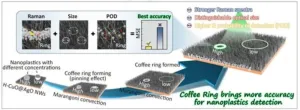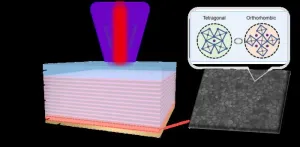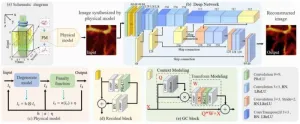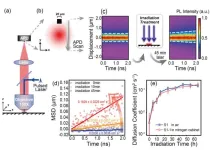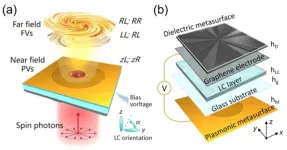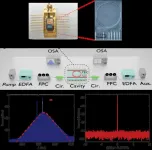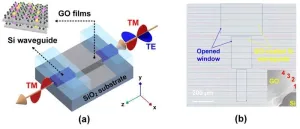(Press-News.org) CHICAGO – The American Association for Cancer Research (AACR)-Cancer Research Institute (CRI) Lloyd J. Old Award in Cancer Immunology will be presented to Crystal L. Mackall, MD, Fellow of the AACR Academy, during the AACR Annual Meeting 2025, to be held April 25-30 at the McCormick Place Convention Center in Chicago, Illinois.
Mackall is the Ernest and Amelia Gallo Family Professor and Professor of Pediatrics and Medicine at Stanford University, the founding director of the Stanford Center for Cancer Cell Therapy, and director of the Parker Institute for Cancer Immunotherapy at Stanford. She is being honored for her illustrious contributions to cancer immunotherapy, including enhancing CAR T-cell therapies, defining resistance mechanisms, advancing consensus treatment algorithms, and leading groundbreaking clinical trials that have fundamentally shaped the field. Mackall is internationally recognized for her seminal discovery of the role of IL-7 in T-cell homeostasis and her unwavering dedication to translational research, leading to the establishment of novel immunotherapeutic strategies for pediatric cancer patients.
The AACR-CRI Lloyd J. Old Award in Cancer Immunology recognizes active scientists whose outstanding and innovative research has had a major impact on the cancer field. Since 2013, this prestigious award has served to celebrate the world’s leading cancer immunologists and inspire others to investigate the role of the immune system in cancer onset and progression
Early in her career, Mackall delineated fundamental mechanisms of human T-cell homeostasis and provided the scientific foundation for lymphodepletion, an essential step in the adoptive cell therapy cycle by which a patient’s immune cells are dramatically reduced prior to treatment, thereby increasing therapeutic efficacy. As a pioneer in the field of adoptive cell therapy, specifically CAR T-cell therapy, Mackall spearheaded one of the first clinical trials dedicated to evaluating CD19-targeted CAR T-cells in pediatric patients with B-cell acute lymphoblastic leukemia, demonstrating high response rates in those with advanced disease. Mackall has led the field in understanding why responses to CAR T-cell therapy are often short-lived, enabling her to develop novel strategies by which to enhance the durability of clinical responses. Mackall is also leading trailblazing research demonstrating, for the first time, activity of CAR T-cell therapy against solid tumors, work that is poised to broaden the impact of CAR T-cells beyond hematological malignancies.
“Dr. Mackall is a renowned physician-scientist whose fundamental research has had a far-reaching translational and clinical impact in cancer immunotherapy,” said Margaret Foti, PhD, MD (hc), chief executive officer of the AACR. “Her illustrious work has led to transformative advances for patients, especially children, with cancer. The AACR and CRI are proud to recognize Dr. Mackall with this prestigious award.”
"Dr. Mackall's pioneering work in CAR T-cell therapy has not only redefined the landscape of cancer immunotherapy but has also given hope to patients facing the toughest battles,” said Alicia Zhou, PhD, Chief Executive Officer at CRI. “Her relentless pursuit of innovation embodies the very spirit of the AACR-CRI Lloyd J. Old Award."
Mackall has been a member of the AACR since 2002 and was elected as a Fellow of the AACR Academy in 2022. She was recently elected to the AACR’s Board of Directors for a 2025-2028 term. Mackall has also played a key role in guiding many of the AACR’s committees, association groups, and meetings. She is a current member of the AACR IO Ad Hoc Committee (2023-present) and the AACR Precision Combination Therapy Task Force (2021-present). She is also a current member of the CRI Clinical Innovator Review Committee (2022-present). She has served as a member (2013-2015) and chair (2022-2023) of the AACR-Cancer Research Institute Lloyd J. Old Award in Cancer Immunology Award Committee. She was also a member of the Pezcoller Foundation-AACR International Award for Extraordinary Achievement in Cancer Research Award Committee (2021-2022). She is a former member of the AACR Science Education and Career Advancement Committee (2018-2021), chair of the AACR Pediatric Cancer Working Group Steering Committee (2017-2019), and member of the AACR Cancer Immunology Working Group Steering Committee (2012-2014). She has also served as a cochair of the AACR Special Conference: Advances in Pediatric Cancer (2019), the AACR Special Conference: Immune Cell Therapies for Cancer – Successes and Challenges of CAR T Cells and Other Forms of Adoptive Therapy (2019), member of the Fourth CRI-CIMT-EATI-AACR International Cancer Immunotherapy Conference Program Committee (2018), and cochair of the AACR Annual Meeting Program Committee (2016-2017, 2018-2019).
In addition, Mackall has provided expert guidance to the AACR’s publications by serving as a member of the AACR Cancer Progress Report Steering Committee (2019), senior editor of the AACR journal Cancer Immunology Research (2019-2022), and member of the editorial board of the AACR journal Molecular Cancer Therapeutics (2007-2012).
Mackall’s work has been celebrated with numerous awards and honors. She was recognized with the AACR-St. Baldrick’s Foundation Award for Outstanding Achievement in Pediatric Cancer Research (2021). She was part of the St. Baldrick’s Foundation-Stand Up To Cancer Pediatric Cancer Dream Team and was recognized with the AACR Team Science Award (2021). In addition, she has received the Memorial Sloan Kettering Cancer Center R. Lois Murphy Award (2024), the American Society for Gene and Cell Therapy George Stamatoyannopoulos Award Lecture (2023), the Alliance for Cancer Gene Therapy Edward Netter Leadership Award (2023), the Sarcoma Foundation of America Nobility in Science Award (2022), American Society for Clinical Oncology Pediatric Oncology Award and Lecture (2021), the Society for the Immunotherapy of Cancer Richard V. Smalley Memorial Award and Lectureship (2021), the American Academy of Dermatology Lila and Murray Gruber Memorial Cancer Research Award and Lectureship (2018), the Top 10 Clinical Research Award for New CAR-T Cell Therapy for Relapsed Leukemia (2018), University of Colorado William Hathaway Visiting Professor Award (2015), the NIH Director's Award (2013), the NIH MERIT Award (2007), the Northeastern Ohio Universities College of Medicine Distinguished Alumni Award (2004), the United States Public Health Service Commendation Medal (2003), the NCI Director's Award (2003), the NIH Distinguished Clinical Teacher Award (2000), and acknowledgement in the International Society of Pediatric Oncology Almanac of Women Leaders in Pediatric Oncology (2023), Endpoints News’ Top 20 Most Influential Women in Biopharma (2023), and the Best Doctors in America list (2006-2019).
In addition to being elected as a Fellow of the AACR Academy, Mackall was elected as a Fellow of the Society for Immunotherapy of Cancer Academy of Immuno-oncology (2023). She is also an elected member of the National Academy of Medicine (2022), the Association of American Physicians (2015), and the American Society for Clinical Investigation (2005).
She earned her undergraduate degree at the University of Akron and her medical degree at the Northeast Ohio Medical University, formerly Northeastern Ohio Universities College of Medicine.
Mackall’s award lecture will be held on Tuesday, April 29, at 3 p.m. CT.
END
Crystal L. Mackall, MD, FAACR, recognized with the 2025 AACR-Cancer Research Institute Lloyd J. Old Award in Cancer Immunology
2025-04-10
ELSE PRESS RELEASES FROM THIS DATE:
A novel strategy for detecting trace-level nanoplastics in aquatic environments: Multi-feature machine learning-enhanced SERS quantification leveraging the coffee ring effect
2025-04-10
A new publication from Opto-Electronic Advances; DOI 10.29026/oea.2025.240260 discusses a novel strategy for detecting trace-level nanoplastics in aquatic environments.
Plastic materials have revolutionized human lifestyles through their versatile applications, yet their environmental legacy now presents critical challenges to global ecosystems and public health. Current models estimate annual plastic influx into aquatic systems at 4.8-12.7 million metric tonnes, with projections suggesting cumulative marine plastic accumulation ...
Blending the old and the new: Phase-change perovskite enable traditional VCSEL to achieve low-threshold, tunable single-mode lasers
2025-04-10
A new publication from Opto-Electronic Advances; DOI 10.29026/oea.2025.240220, discusses how phase-change perovskite enables traditional VCSEL to achieve low-threshold, tunable single-mode lasers.
As an important light source, lasers are widely used in many fields such as communications, medical treatment, display technology and scientific research. However, with the continuous advancement of technology, people have put forward higher requirements on the performance of lasers, especially in terms of integration and tunability. Traditional lasers typically rely on fixed gain media and external microcavity structures (such as Fabry-Perot cavities, ...
Enhanced photoacoustic microscopy with physics-embedded degeneration learning
2025-04-10
A new publication from Opto-Electronic Advances; DOI 10.29026/oea.2025.240189, discusses enhanced photoacoustic microscopy with physics-embedded degeneration learning.
In recent years, photoacoustic imaging (PAI), as an emerging imaging technology, has gradually attracted widespread attention across various fields, particularly in interdisciplinary areas such as medicine, physics, and chemistry. In brief, PAI combines the unique advantages of both optics and acoustics. The fundamental principle of PAI is as follows: when laser light ...
Light boosts exciton transport in organic molecular crystal
2025-04-10
A new publication from Opto-Electronic Advances; 10.29026/oea.2025.240207, discusses how light boosts exciton transport in organic molecular crystal.
Organic semiconductors, composed of organic molecules or polymers, offer advantages such as low cost, flexibility, lightweight design, and tunable structural-functional properties. They have significant applications in OLED displays (e.g., smartphones, TVs), organic photovoltaic cells (flexible solar panels), and flexible sensors. In organic semiconductors, excitons—carriers of excited-state ...
On-chip multi-channel near-far field terahertz vortices with parity breaking and active modulation
2025-04-10
A new publication from Opto-Electronic Advances; DOI 10.29026/oea.2025.240250, discusses on-chip multi-channel near-far field terahertz vortices with parity breaking and active modulation.
Vortex beams with helical phase wavefronts can carry orbital angular momentum (OAM) and have promising applications in high-capacity communication, information processing and high-resolution imaging. With the further development of terahertz (THz) technology in the fields of communication, radar and substance detection, ...
The generation of avoided-mode-crossing soliton microcombs
2025-04-10
A new publication from Opto-Electronic Advances; DOI 10.29026/oea.2025.240257 , discusses generation of avoided-mode-crossing soliton microcombs.
Optical frequency combs refer to spectra composed of a series of frequency components that are uniformly spaced, resembling the teeth of a comb, thus the term "optical frequency comb." In recent years, optical frequency combs generated in microresonators (known as microcombs) have attracted significant attention due to their high repetition rates, broad bandwidths, ...
Unlocking the vibrant photonic realm: A new horizon for structural colors
2025-04-10
A new publication from Opto-Electronic Sciences; DOI 10.29026/oes.2025.240030, discusses unlocking the vibrant photonic realm.
Nature not only provides humans with abundant material resources but also offers rich colors, satisfying both material and spiritual needs. The vibrant and diverse colors displayed by peacock feathers, opals, and beetles are all a result of the exquisite structural colors found in nature. The micro- and nanostructures on their surfaces interact with light, producing phenomena such as diffraction, scattering, ...
Integrated photonic polarizers with 2D reduced graphene oxide
2025-04-10
A new publication from Opto-Electronic Sciences; DOI 10.29026/oes.2025.240032 , discusses integrated photonic polarizers with 2D reduced graphene oxide.
In modern optical systems, controlling light polarization is of fundamental importance and underpins a variety of advanced optical technologies. Optical polarizers, which selectively transmit light with a specific polarization orientation while blocking light of the orthogonal polarization, are essential components underpinning modern optical systems for a diverse range of applications. The applications are divided into ...
Shouldering the burden of how to treat shoulder pain
2025-04-10
Shoulders are, in many ways, a marvel. One shoulder has four separate joints, packed with muscles, that allow us to move our arm in eight different major ways, giving us the most degrees of freedom of any joint in the body. We can swim, toss, hug, and even punch because of the movement our shoulders enable.
But the same complexity that allows us such motion also presents opportunities for pain when something goes wrong. Another complication: shoulders change as we age, and new types of injuries come with it. Clinical practitioners ...
Stevens researchers put glycemic response modeling on a data diet
2025-04-10
Hoboken, N.J., April 10, 2025 — If you eat a snack — a meatball, say, or a marshmallow — how will it affect your blood sugar? It’s a surprisingly tricky question: the body’s glycemic response to different foods varies based on individual genetics, microbiomes, hormonal fluctuations, and more. Because of that, providing personalized nutritional advice — which can help manage diabetes, obesity, and cardiovascular diseases, among other conditions — requires costly and intrusive testing, making it hard to deliver effective care at scale.
In a paper in the Journal of Diabetes Science and Technology, ...
